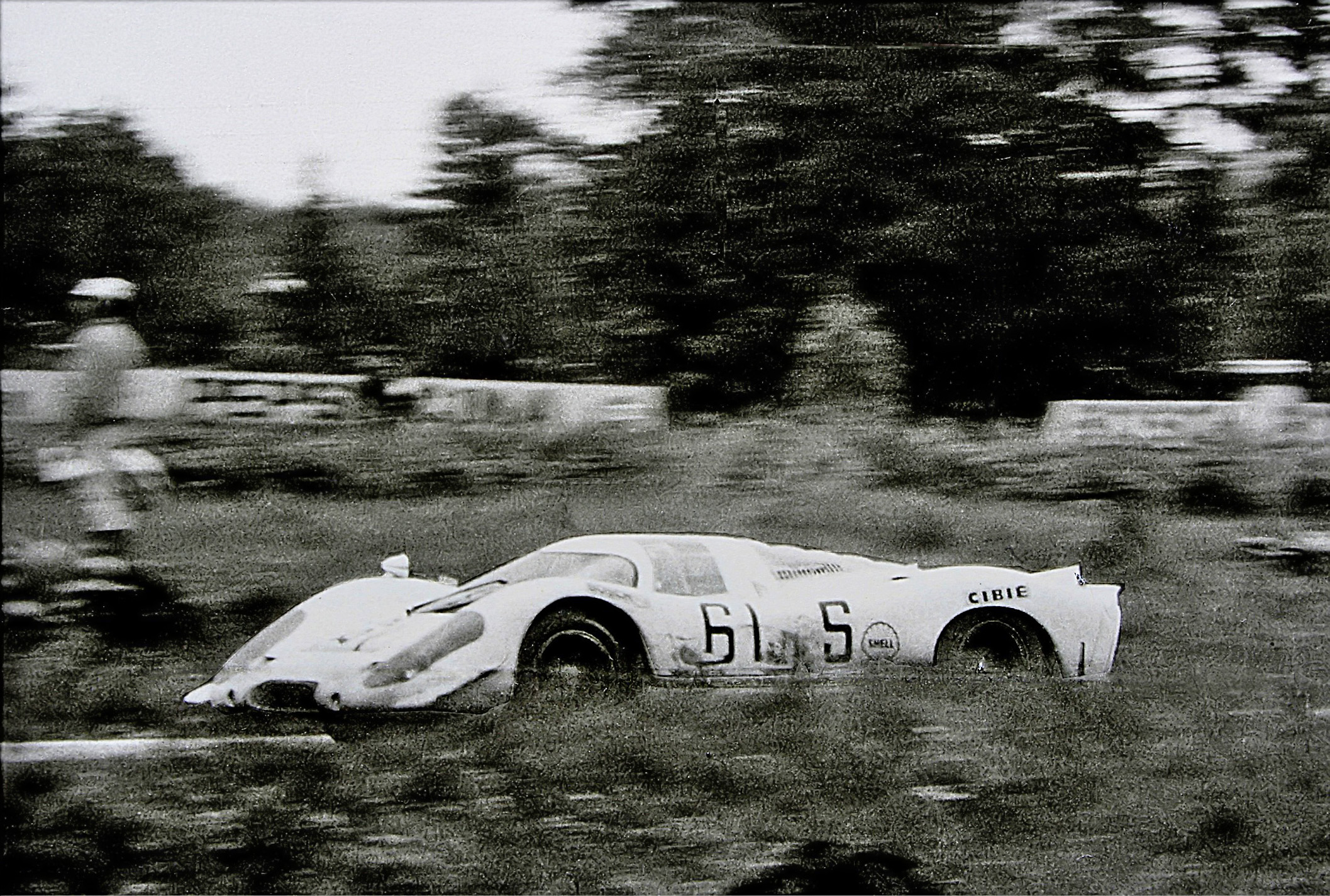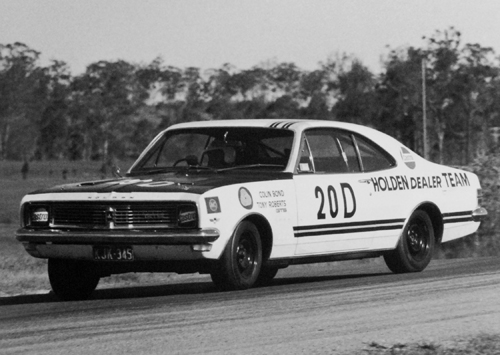|
1971 Australian Grand Prix
The 1971 Australian Grand Prix was a motor race held at Warwick Farm Raceway in New South Wales, Australia on 21 November 1971. It was open to Racing Cars complying with either Australian Formula 1 or Australian Formula 2 regulations.Conditions for Australian Titles, 1971 CAMS Manual of Motor Sport, page 79 The race was the thirty sixth running of the Australian Grand Prix. Frank Matich won his second straight AGP and, as in 1970, he started the race on pole and also set the fastest race lap. The race marked the debut of Matich's self designed and built Matich A50 which was powered by a Repco Holden V8 engine. Matich won the race by 58.7 seconds from Kevin Bartlett driving a McLaren M10B-Chevrolet, with Alan Hamilton, also driving McLaren M10B-Chevrolet, 1.1 seconds behind Bartlett in third place. Other than two New Zealanders, the only international driver in the event was Formula One World Drivers' Champion John Surtees. The Englishman started ninth in his Surtees TS8-Chevr ... [...More Info...] [...Related Items...] OR: [Wikipedia] [Google] [Baidu] |
Australian Formula 1
Australian Formula 1 (AF1) was a motor sport category for open-wheeler racing cars which was current in Australia from 1970 to 1983. AF1 was introduced by the Confederation of Australian Motor Sport in 1970, initially restricting cars to unsupercharged engines of no greater than 2.5-litre capacity, running on commercial fuel. AF1 was essentially a new name for the Australian National Formula which had been Australia’s premier racing category from 1964 to 1969. Effective 23 February 1971, AF1 was changed to a two-part formula catering for racing cars fitted with 5.0-litre production based pushrod V8 engines (internationally known as Formula 5000 cars) and those fitted with less restricted unsupercharged engines of eight cylinders or less and up to 2000 cc in capacity. The smaller engine option was discontinued after 1976. The main engines used were Chevrolet Small-Block engine, Chevrolet and Repco-Holden V8 engine, V8's, though occasionally a Ford 335 engine#302 and 351 Cleve ... [...More Info...] [...Related Items...] OR: [Wikipedia] [Google] [Baidu] |
Chevrolet Small-block Engine .
{{SIA ...
Chevrolet small-block engine refers to one of a number of gasoline-powered vehicle engines manufactured by the General Motors company. These include: * The III, IV, V generation of LS-based GM engines. * The I, II generation of non-LS Chevrolet small-block engines. * Or the Chevrolet Gemini small-block engine The Chevrolet Gemini small-block engine is a dual-overhead cam (DOHC) V8 engine designed by General Motors. While technically a small-block engine due to its bore spacing of 4.4 inches,, General Motors engineers don't consider it to be a part o ... [...More Info...] [...Related Items...] OR: [Wikipedia] [Google] [Baidu] |
John Harvey (motorsport)
John Francis Harvey (21 February 1938 – 5 December 2020) was an Australian racing driver. He was a top Speedcar driver for many years in the 1950s and 1960s, winning many championship races including the NSW Championship for three successive years and the Victorian Championship twice before turning his skills to road racing where he had a long and successful career until his retirement at the end of 1988. In 1987 John made history driving the General Motors Sunraycer to victory in the inaugural World Solar Challenge from Darwin to Adelaide, the first international race for purely solar powered cars. Career Despite being regarded as one of the best Speedcar drivers in Australia, Harvey switched from speedway to road racing in 1964 following the deaths of a few friends in Speedcar racing, as well as a contentious 6-month suspension received from the Sydney-based National Speedcar Club officials after he was alleged to spin fellow driver Al Staples in a scratch race at the Sy ... [...More Info...] [...Related Items...] OR: [Wikipedia] [Google] [Baidu] |
Inline-four Engine
A straight-four engine (also called an inline-four) is a four-cylinder piston engine where cylinders are arranged in a line along a common crankshaft. The vast majority of automotive four-cylinder engines use a straight-four layout (with the exceptions of the flat-four engines produced by Subaru and Porsche) and the layout is also very common in motorcycles and other machinery. Therefore the term "four-cylinder engine" is usually synonymous with straight-four engines. When a straight-four engine is installed at an inclined angle (instead of with the cylinders oriented vertically), it is sometimes called a slant-four. Between 2005 and 2008, the proportion of new vehicles sold in the United States with four-cylinder engines rose from 30% to 47%. By the 2020 model year, the share for light-duty vehicles had risen to 59%. Design A four-stroke straight-four engine always has a cylinder on its power stroke, unlike engines with fewer cylinders where there is no power stroke occu ... [...More Info...] [...Related Items...] OR: [Wikipedia] [Google] [Baidu] |
Waggott Engineering
Waggott Engineering was an Australian automotive engineering company which gained fame for the engines which it produced for motor sport applications from the 1950s through to the 1970s. The company had its origins in a machine shop opened in 1948 by Merv Waggott. Initially concentrating on commercial refrigerator repairs and general engineering it later diversified into the production of after-market parts for automotive and motor sport applications. This was followed in the mid-1950s by the development and production of the Waggott TC engine.About Waggott Cams Retrieved from www.waggottcams.com.au on 11 September 2009 Although based on the six-cylinder Holden “Grey” motor it was extensively modified with twin overhead camshafts, a s ... [...More Info...] [...Related Items...] OR: [Wikipedia] [Google] [Baidu] |
Mildren Mono
The Mildren name was used on a series of racing vehicles constructed for, or acquired by, Australian racing team owner Alec Mildren during the 1960s and early 1970s. Mildren Maserati The Mildren Maserati was a one-off sports car which was built in 1964, utilizing a clone of a Lotus 19 chassis with components from a Cooper T51 and a 2.9 litre Maserati Type 61 engine.Rennmax, www.oldracingcars.com Retrieved on 15 December 2012 The chassis was constructed by Bob Britton, who also produced racing cars under the name. [...More Info...] [...Related Items...] OR: [Wikipedia] [Google] [Baidu] |
Lola T300
The Lola T300 was an open-wheel formula race car, designed, developed and built by Lola Cars, for Formula 5000 Formula 5000 (or F5000) was an open wheel, single seater auto-racing formula that ran in different series in various regions around the world from 1968 to 1982. It was originally intended as a low-cost series aimed at open-wheel racing cars tha ... racing, in 1971. References {{Lola Formula Cars T300 Formula 5000 cars ... [...More Info...] [...Related Items...] OR: [Wikipedia] [Google] [Baidu] |
Frank Gardner (racing Driver)
Frank Gardner OAM (1 October 1931 – 29 August 2009) was a racing driver from Australia. Born in Sydney, he was best known for touring car racing, winning the British Saloon Car Championship three times, and sports car racing driver but he was also a top flight open wheeler driver. He was European Formula 5000 champion, and participated in nine World Championship Formula One Grands Prix, debuting on 11 July 1964. He scored no championship points. Gardner also participated in numerous non-Championship Formula One races and his results included a third placing at the 1965 Mediterranean Grand Prix at the Autodromo di Pergusa in Sicily, fourth in the 1965 Race of Champions at Brands Hatch and third in the 1971 International Gold Cup at Oulton Park. He participated each year in the open wheeler Tasman Series held in New Zealand and Australia during the European winter, and shared the grids with the likes of Jim Clark, Graham Hill and Jochen Rindt and won the New Zealand ... [...More Info...] [...Related Items...] OR: [Wikipedia] [Google] [Baidu] |
1971 Rothmans F5000 European Championship
The 1971 Rothmans F5000 European Championship was a motor racing series for Formula 5000 cars.Wolfgang Kopfler, Formula 5000 in Europe - Race by Race, 2004, pages 67 to 89 The series was organized in the United Kingdom by the British Racing and Sports Car Club but also included European rounds.''European Formula 5000 races 1969-1977'', www.oldracingcars.com Retrieved on 16 October 2014 It was the third of seven annual s to be contested between 1969 and 1975,Wolfgang Kopfler, Formula 5000 in Europe - Race by Race, 2004, Table of Contents and the first to car ... [...More Info...] [...Related Items...] OR: [Wikipedia] [Google] [Baidu] |
Colin Bond
Colin John Bond (born 24 February 1942) is a retired Australian racing driver. Bond reached the highest levels in Australian motorsport in 1969 when he was recruited by Harry Firth to the newly formed Holden Dealer Team. He quickly found success, winning the 1969 Hardie-Ferodo 500 mile race (now the Bathurst 1000) at Bathurst, New South Wales in a Holden Monaro. Bond was a particularly versatile driver, also finding success in the Australian Rally Championship, winning the title in 1971, 1972 and 1974 driving a Holden Torana. Bond also won the 1975 Australian Touring Car Championship in a Holden Torana and was inducted into the V8 Supercars Hall of Fame in 2002. Early career Bond initially made a reputation as a hillclimber with three NSW Hillclimb titles in 1965-67 driving a Lynx-Peugeot S/C. Also known as a rally driver he was relatively unknown in circuit racing circles apart from a few forays racing various Isuzu Belletts, when he was chosen to partner Tony Robert ... [...More Info...] [...Related Items...] OR: [Wikipedia] [Google] [Baidu] |
Surtees
The Surtees Racing Organisation was a race team that spent nine seasons (1970 to 1978) as a constructor in Formula One, Formula 2, and Formula 5000. History The team was formed by John Surtees, a four-time 500cc motorcycle champion and the 1964 Formula One champion. Surtees formed the team in 1966 for the newly formed CanAm series (an unlimited sports car series), winning the championship as an owner/driver in its first year. He fielded an entry in another newly formed series in 1969, becoming part of Formula 5000 after taking over the failed Leda F5000 project, and his team constructed its own cars for the first time. His team was successful, winning five races, consecutively, during a twelve race season. This inspired Surtees to expand to Formula One, and after having had a difficult season with BRM in 1969, he decided to become an owner/driver again. The team ran the full 1970 season, but John Surtees was forced to run the first four races in an old McLaren due to a ... [...More Info...] [...Related Items...] OR: [Wikipedia] [Google] [Baidu] |







